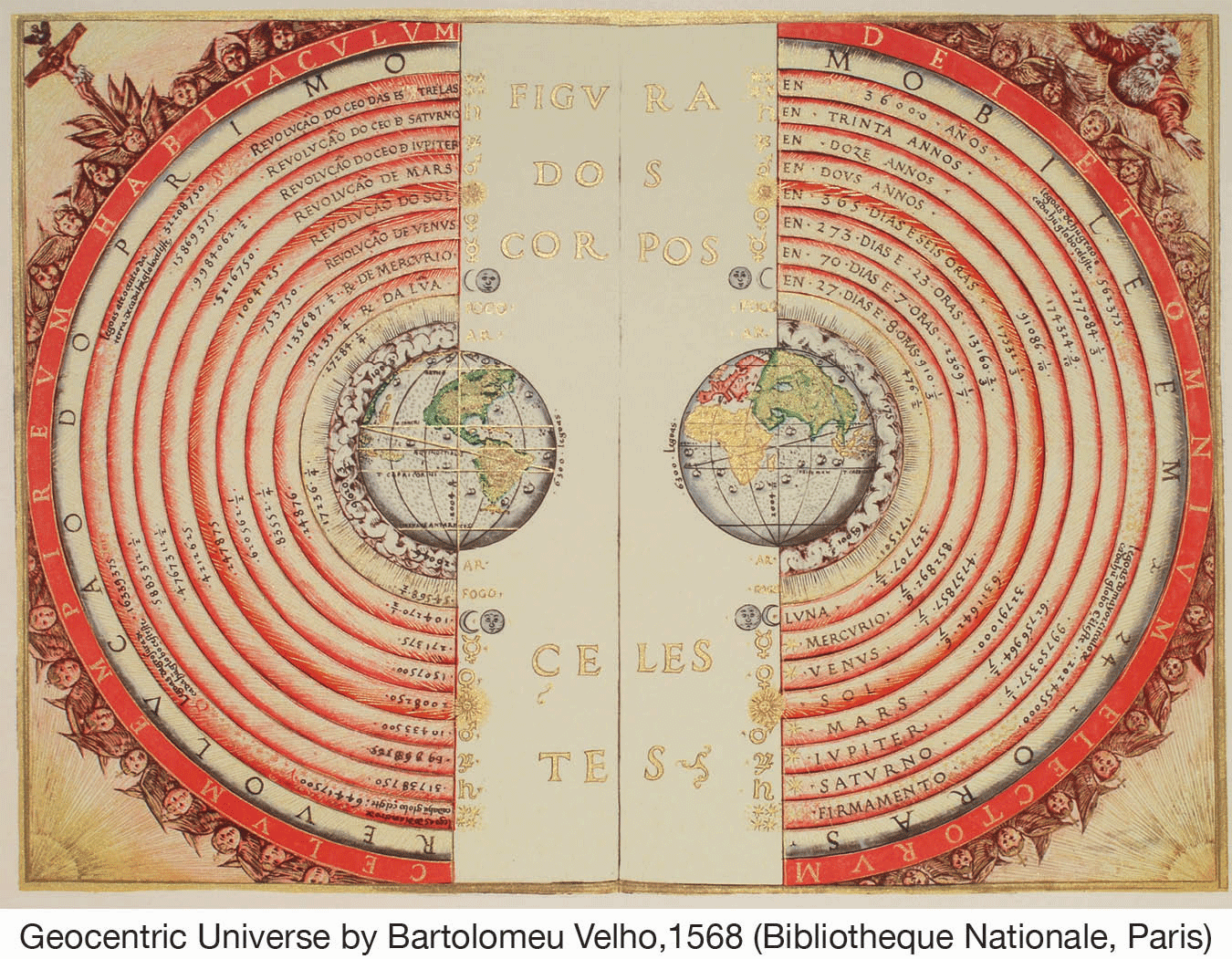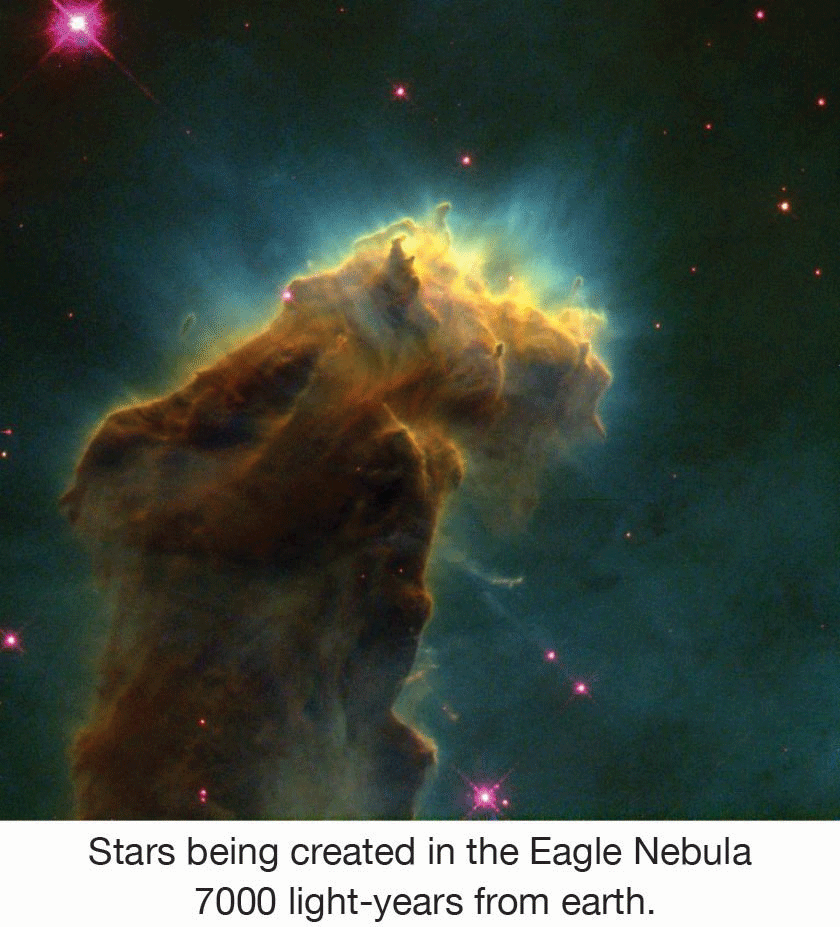
Nearly every Bible scholar and student had latched onto a particular interpretation concerning the universe. The earth was the center, the sun and moon circled it, the fixed stars were in a canopy that also circled the earth, and each of the wandering stars (planets) had its peculiar orbit around the earth.

Had that concept been correct, science would, centuries ago, have proven all its tenets. Beyond that, the concept of the God of the Bible would be virtually proven, and we would be walking by sight.
While the Bible clearly proclaims a spiritual realm, it distinguishes that realm from the physical realm. “For we walk by faith, not by sight” (2 Corinthians 5:7). Yet the creation does supply us with abundant clues to a realm beyond. “The heavens declare the glory of God; … Their voice goes out into all the earth” (Psalm 19:1, 4).
As the discipline of science developed, it conflicted with the accepted biblical interpretation, and an unnecessary wall was erected. Gradually, religious leaders relented on their incorrect interpretations and opened the door for some harmony with scientific advancement.
However, some participants in the battle prefer to continue to fight. Some in science believe that foolish theological concepts strengthen their atheistic concept and support their attack on all religion. Some who endorse religion stubbornly fight science as the enemy.
Yet, I suspect that for more people who are turning from faith, God is not lost in an intellectual battle, but in the vast unknown. We commonly hear of billions of stars that God created for our enjoyment and for nighttime navigational purposes. Yet less than one star in a million billion is discernible by the naked eye.
 For most people, it would be easier to perceive of man being important to God if man occupied center stage in the universe. As it became known that earth is an unimaginably minute speck in the universe, it became easier to suppose that we exist without purpose.
For most people, it would be easier to perceive of man being important to God if man occupied center stage in the universe. As it became known that earth is an unimaginably minute speck in the universe, it became easier to suppose that we exist without purpose.
Our social culture and obsession with behaviors that are biblically designated as sinful have resulted in ignoring scriptural moral standards. They also probably constitute the major driving force for unbelief. Scientific intellectualism is often claimed as the reason for endorsing atheism. This environment has resulted in a slow increase in atheism. However, the current-century term “apatheism” is now applied to a more rapidly growing segment of the population. Apatheists suppose that faith is an unimportant concept and that their lives would be unchanged if they ever decided to believe in theism or atheism. Thus, God, if there is a God, is irrelevant to their decisions and life styles.
Fundamental atheists regularly proclaim that religion is the cause of most of the world's problems and that it is the ultimate evil. That premise may be scientifically testable. If it is true, as atheism increases, we should be seeing an improved quality of life. There should be fewer individual and political conflicts. There should be more compassion and fewer crimes.
However, as it relates to these matters there is a discernible direction that societies move in when faith diminishes. There is no higher quality of life that results from unbelief.
Clearly, many unbelievers are excellent neighbors and exceptional humanitarians. Perhaps they represent a generation that is still significantly influenced by spiritual standards. Those who have applied “survival of the fittest” concepts to our neighborhoods and work places have diminished the quality of life for many.
Though it is true that religion has been at the heart of much conflict, the model of faith-living portrayed in the Gospels as the teachings and life of Jesus Christ remains difficult to fault. Even the agnostic, Loren Eiseley, acknowledged the worthiness of Jesus' influence with the words, “… love, compassion, call it what one will — which however discounted in our time, moved the dying Christ on Golgotha with a power that has reached across two thousand weary years.” Any society that increases its devotion to the Christ-standard improves its quality of life.
When it comes to Jesus, those who attack religion usually satisfy themselves with imagined uncertainty about his existence and small talk about the Gospels being written decades after Jesus died. The major faults that they want to heap on religion never come close to the one who hung on Calvary’s cross.
Fundamental to the concepts of faith and the freewill to believe, is the fact that science will never find God. Our older generation was amazed at the proclamation of the first cosmonaut to circle the earth from space. He taunted believers by declaring that he did not see their God. Yet the premise of his conclusion is at the heart of modern intellectual unbelief. Some believe that if it cannot be determined by science it has no reality. Their minds are closed to the concept of God, and they do not believe in the existence of anything that is not detected by microscope, test tube, telescope, or other physical tools. Yet many arrive at a different conclusion and view water molecules, warblers, sunsets, and Hubble photos as evidence to believe or increase their faith in God.
Ecclesiastes 3:11 states, “He has made everything beautiful in its time. He has also set eternity in the hearts of men; yet they cannot fathom what God has done from the beginning to the end.” Those who are losing their grip on faith in God because the cosmos is complicated missed that point. The expectation that if God did it then it should be somehow simple is amazing when you think that the alternative is to attribute the complexity to chance.
There is no need to lose God in the vastness of the universe. We will never understand it all, but that does not constitute a reason to deny purpose and reject faith in God. After all, to turn away would not be turning to a more intellectually satisfying explanation.
Picture credits:
http://en.wikipedia.org/wiki/File:Bartolomeu_Velho_1568.jpg
NASA, ESA, STScI, J. Hester and P. Scowen (Arizona State University)
